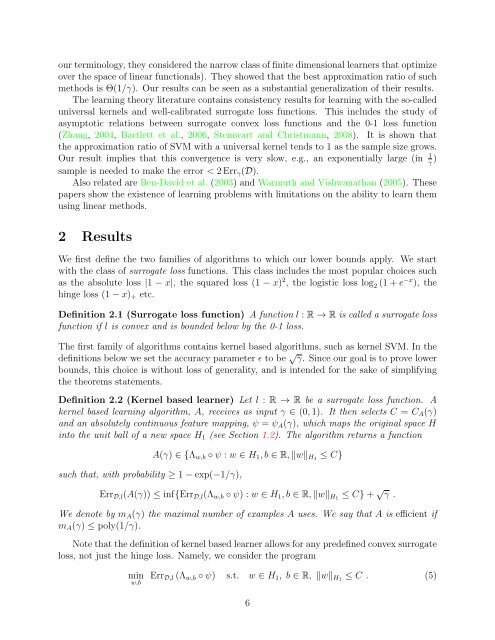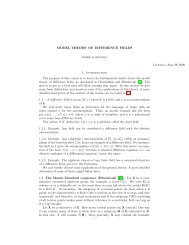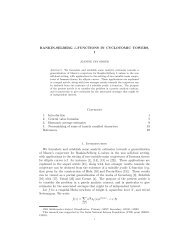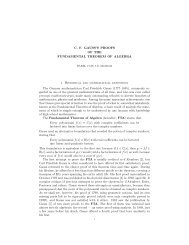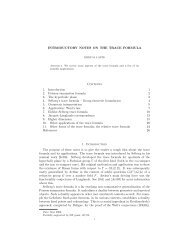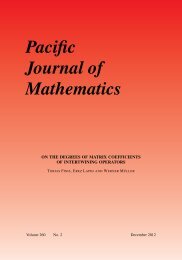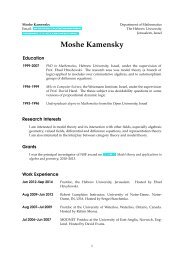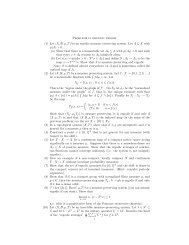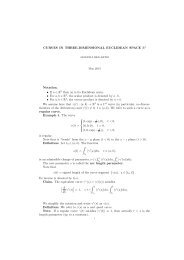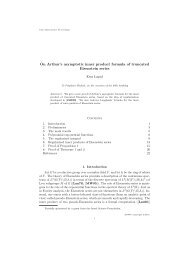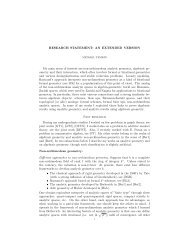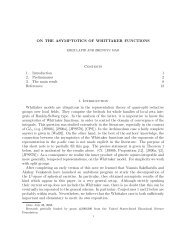The error rate of learning halfspaces using kernel-SVM
The error rate of learning halfspaces using kernel-SVM
The error rate of learning halfspaces using kernel-SVM
Create successful ePaper yourself
Turn your PDF publications into a flip-book with our unique Google optimized e-Paper software.
our terminology, they considered the narrow class <strong>of</strong> finite dimensional learners that optimizeover the space <strong>of</strong> linear functionals). <strong>The</strong>y showed that the best approximation ratio <strong>of</strong> suchmethods is Θ(1/γ). Our results can be seen as a substantial generalization <strong>of</strong> their results.<strong>The</strong> <strong>learning</strong> theory literature contains consistency results for <strong>learning</strong> with the so-calleduniversal <strong>kernel</strong>s and well-calib<strong>rate</strong>d surrogate loss functions. This includes the study <strong>of</strong>asymptotic relations between surrogate convex loss functions and the 0-1 loss function(Zhang, 2004, Bartlett et al., 2006, Steinwart and Christmann, 2008). It is shown thatthe approximation ratio <strong>of</strong> <strong>SVM</strong> with a universal <strong>kernel</strong> tends to 1 as the sample size grows.Our result implies that this convergence is very slow, e.g., an exponentially large (in 1 ) γsample is needed to make the <strong>error</strong> < 2 Err γ (D).Also related are Ben-David et al. (2003) and Warmuth and Vishwanathan (2005). <strong>The</strong>sepapers show the existence <strong>of</strong> <strong>learning</strong> problems with limitations on the ability to learn them<strong>using</strong> linear methods.2 ResultsWe first define the two families <strong>of</strong> algorithms to which our lower bounds apply. We startwith the class <strong>of</strong> surrogate loss functions. This class includes the most popular choices suchas the absolute loss |1 − x|, the squared loss (1 − x) 2 , the logistic loss log 2 (1 + e −x ), thehinge loss (1 − x) + etc.Definition 2.1 (Surrogate loss function) A function l : R → R is called a surrogate lossfunction if l is convex and is bounded below by the 0-1 loss.<strong>The</strong> first family <strong>of</strong> algorithms contains <strong>kernel</strong> based algorithms, such as <strong>kernel</strong> <strong>SVM</strong>. In thedefinitions below we set the accuracy parameter ɛ to be √ γ. Since our goal is to prove lowerbounds, this choice is without loss <strong>of</strong> generality, and is intended for the sake <strong>of</strong> simplifyingthe theorems statements.Definition 2.2 (Kernel based learner) Let l : R → R be a surrogate loss function. A<strong>kernel</strong> based <strong>learning</strong> algorithm, A, receives as input γ ∈ (0, 1). It then selects C = C A (γ)and an absolutely continuous feature mapping, ψ = ψ A (γ), which maps the original space Hinto the unit ball <strong>of</strong> a new space H 1 (see Section 1.2). <strong>The</strong> algorithm returns a functionsuch that, with probability ≥ 1 − exp(−1/γ),A(γ) ∈ {Λ w,b ◦ ψ : w ∈ H 1 , b ∈ R, ‖w‖ H1 ≤ C}Err D,l (A(γ)) ≤ inf{Err D,l (Λ w,b ◦ ψ) : w ∈ H 1 , b ∈ R, ‖w‖ H1 ≤ C} + √ γ .We denote by m A (γ) the maximal number <strong>of</strong> examples A uses. We say that A is efficient ifm A (γ) ≤ poly(1/γ).Note that the definition <strong>of</strong> <strong>kernel</strong> based learner allows for any predefined convex surrogateloss, not just the hinge loss. Namely, we consider the programminw,bErr D,l (Λ w,b ◦ ψ) s.t. w ∈ H 1 , b ∈ R, ‖w‖ H1 ≤ C . (5)6


